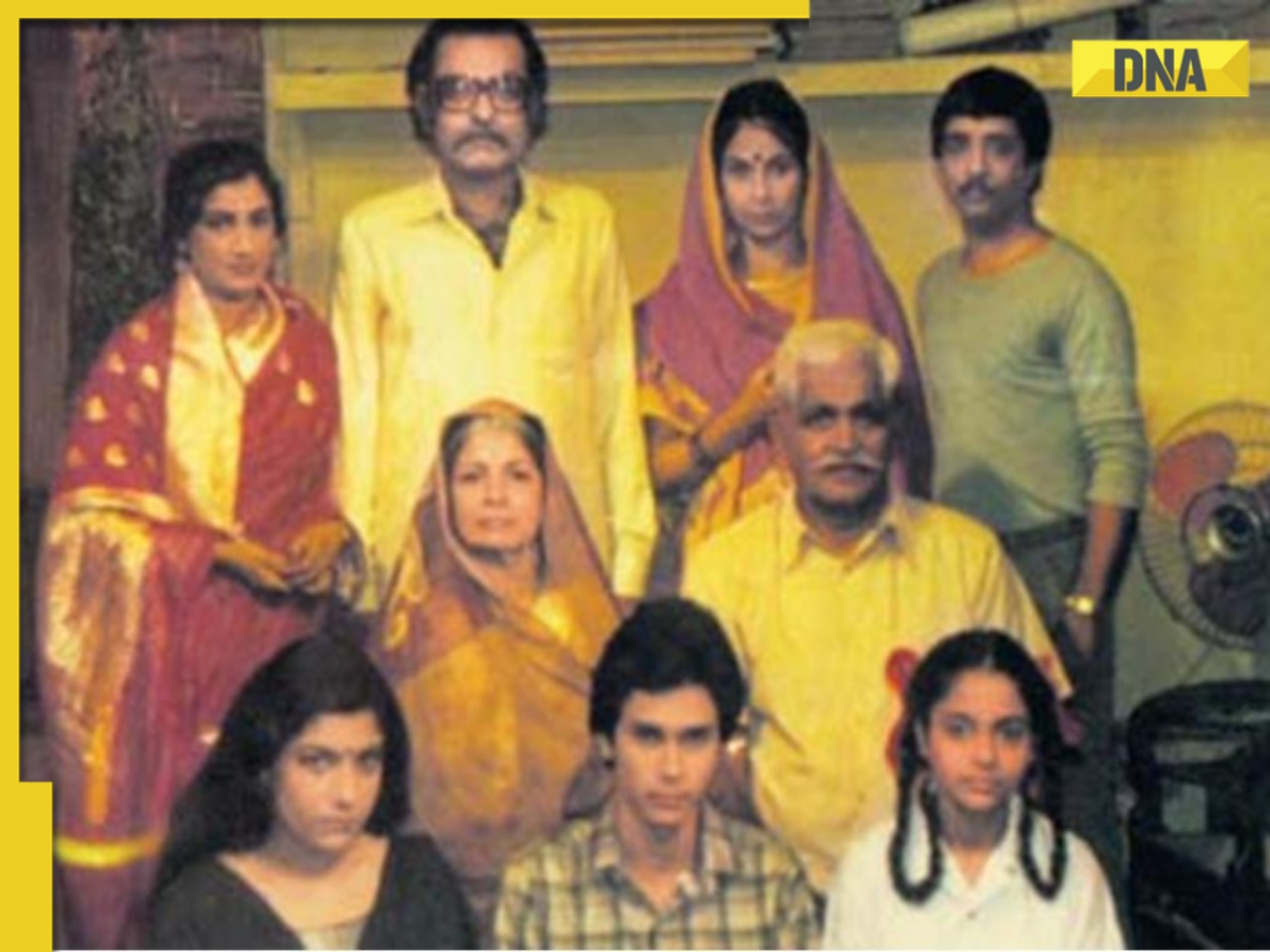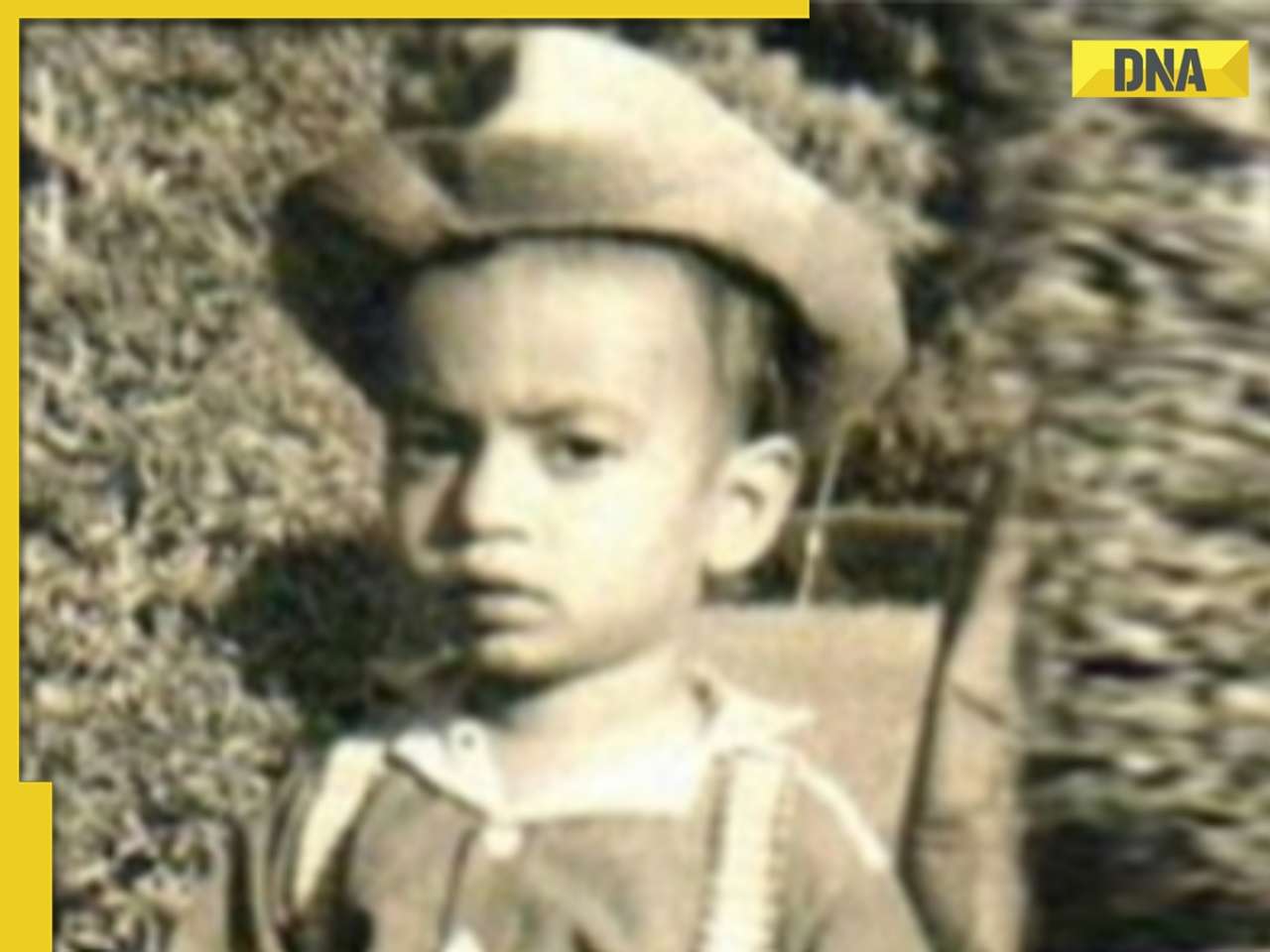Oscar-nominated filmmakers Paola di Florio and Lisa Leeman talk to Gargi Gupta about Awake, their documentary on Paramahansa Yogananda
In the run-up to International Day of Yoga (IDY) on Tuesday, a few select theatres across India are screening a documentary called Awake on the life of Yogananda, the spiritual guru who is credited with taking yoga to the West, and whose best-selling Autobiography of a Yogi was the only book Steve Jobs had on his iPad. The film by two American directors, the Academy Award-nominated Paola di Florio and Lisa Leeman, who's made several award-winning films on social issues, is fairly straightforward.
Awake traces the life of the seer, born Mukunda Ghosh in 1893 in Gorakhpur, from the loss of his mother at a young age to his spiritual initiation under Shyama Charan Lahiri, the journey to the US in 1920, his charismatic lectures which soon brought in disciples in droves, his Self-Realisation Fellowship, and so on, ending with his death in 1952, in the middle of a speech at a banquet to felicitate the Indian ambassador to the US. The filmmakers are clearly converts, who know and believe enough of Indian spiritual ideas, and this influences their attitude to Yogananda, which is reverential rather than objective. But then that's only to be expected.
Edited excerpts of an email interview with Lisa Leeman and Paola di Florio.
How did you become acquainted with Yogananada?
Lisa: In 1984, my boyfriend at the time told me I was 'too empirical' and that I should read a certain book. That book turned out to be Yogananda's Autobiography of a Yogi. The book had chapter titled 'The Saint With Two Bodies', 'The Levitating Saint', and 'Manifesting a Palace in the Himalayas'. I didn't know how to take it – as reality? as metaphor? as myth? Ultimately, the book opened me up to the possibility that things may occur that seem outside of a rational understanding of the material world.
Do you practice yoga yourselves? Are you followers of Yogananda?
Lisa: I have meditated and practiced yoga for many years, and made several films about yoga and Buddhism. I am not a member of Yogananda's SRF. I already had a teacher when I started the film, and I thought it was best to stay independent.
Paola: I have practiced asanas for 20 years and was a meditator in both the Vipassana and mantra traditions, but it wasn't until I became immersed in Yogananda's teachings, that my spiritual life began to take off. I returned from filming for Awake in India with a thirst for a deeper connection to a spiritual path, and a year later I was initiated into Kriya Yoga. Yogananda teaches that Kriya Yoga reverses the searchlights of our senses, which are always pointing outwards toward the world around us. By reversing this and directing our attention inward, we gain access to a new realm of information. I believe this intuitive field is also the key to any creative process.
You have accessed a lot of footage and photographs of Yogananda in America from his earliest days there. Was this not unusual for an obscure Indian yogi?
Paola: By the 1920s, Yogananda was traveling across America, giving classes on "How to Live" and initiating people into Kriya Yoga. We learnt through letters in the SRF archives that cameras were given to him as gifts from his students - among them was George Eastman, inventor of the Kodak camera. What was fascinating to us was how Yogananda used the camera as a means of giving 'darshan' to future generations. There are moments when he looks directly into the camera, his gaze lingering into the lens. Our audiences from across the country and the world commented on the power they felt looking into his eyes. Perhaps this is one of the reasons many people returned multiple times to see the film. One audience member from California showed up 27 times!
What about the others like Indra Devi and Maharshi Mahesh Yogi who too helped make yoga popular?
Lisa: I'd love to make films about all of them! In fact, my next project is a two-hour program for American Public Television that tells the story of how Yoga and Vedanta came to America, and how these precepts and practices from ancient India have influenced American life from our great philosopher/authors Ralph Waldo Emerson and Henry David Thoreau to the 1960s counter culture, and up to today's yoga and mindfulness boom.
I think each of these gurus was hugely influential in their own time –Yogananda came to the US in 1920, when many Americans were disillusioned by World War I, and were ready for his message of yoga as a vehicle for inner transformation. Decades later, Indra Devi popularised a more physical approach to yoga in beauty-and-health-obsessed 1950s Los Angeles; and Maharishi Mahesh Yogi helped trigger the great explosion of interest in all things Indian in the 1960s, when the Beatles made their famous trip to Rishikesh to study with the Maharishi.
There have been many other influential swamis, gurus, and yoga teachers as well, such as Swami Vivekananda, who became the first 'celebrity swami' in the US, in the 1890s; Swami Satchidananda, who calmed the crowd at the raucous Woodstock Music Festival in 1968; Swami Muktananda, and Swami Prabhupada (who founded the Krishna Consciousness movement); Amma and Sri Karunamayi, modern female gurus; and of course, the gurus of postural yoga, BKS Iyengar and Patabhi Jois, both of whom were pupils of T. Krishnamacharya, who is often credited with reviving hatha yoga.
Some Indian gurus in the US - your film mentions Dhirananda, Yogananda's close associate – and more recently, Rajneesh and Bikram Choudhury, have been accused of sexual misconduct. Has it affected yoga's appeal?
Paola: Just to be clear, there had been no charges against Bikram Choudhury at the time that we interviewed him for our film. It's heartbreaking and repugnant to hear of any circumstances of sexual misconduct, not to mention in cases where deep and sacred bonds are being violated, such as in a guru-disciple relationship.
But what I've learned from these sacred, ancient teachings is that delusion is a part of living in the material world and despite the scandals that have occurred with some particular gurus in past decades, yoga's popularity continues to be on the rise, not only in the west but all over the globe. Perhaps this speaks to the power of yoga and the millions of lives that have been transformed physically, mentally and spiritually by the practice. This is not something that can be overlooked.
The Indian government has declared June 21 as the International Day of Yoga - has it added to yoga's popularity in the West?
Lisa: Yes, it's wonderful to see an International Day of Yoga celebrated and observed around the world. In the United States today, it's said that 20 million Americans practice yoga, and that it is a $10 billion industry. It's terrific that the IDY will draw additional attention to the positive benefits of yoga.
Paola: Yogananda's guru, Lahiri Mahasaya, predicted that Yogananda would help spread the teachings of yoga throughout the world. It appears this has finally come to pass.
What we've seen in the west since the ratification of International Day of Yoga has been an ever-increasing mainstreaming of the practice. In addition to the plethora of yoga studios in Los Angeles, there are now stylish meditation oases cropping up, that provide an alternative to coffee or lunch during a typical workday. And corporations like Google are introducing meditation into the work-place. It's become the "new normal."
![submenu-img]() Firing at Salman Khan's house: Shooter identified as Gurugram criminal 'involved in multiple killings', probe begins
Firing at Salman Khan's house: Shooter identified as Gurugram criminal 'involved in multiple killings', probe begins![submenu-img]() Salim Khan breaks silence after firing outside Salman Khan's Mumbai house: 'They want...'
Salim Khan breaks silence after firing outside Salman Khan's Mumbai house: 'They want...'![submenu-img]() India's first TV serial had 5 crore viewers; higher TRP than Naagin, Bigg Boss combined; it's not Ramayan, Mahabharat
India's first TV serial had 5 crore viewers; higher TRP than Naagin, Bigg Boss combined; it's not Ramayan, Mahabharat![submenu-img]() Vellore Lok Sabha constituency: Check polling date, candidates list, past election results
Vellore Lok Sabha constituency: Check polling date, candidates list, past election results![submenu-img]() Meet NEET-UG topper who didn't take admission in AIIMS Delhi despite scoring AIR 1 due to...
Meet NEET-UG topper who didn't take admission in AIIMS Delhi despite scoring AIR 1 due to...![submenu-img]() DNA Verified: Is CAA an anti-Muslim law? Centre terms news report as 'misleading'
DNA Verified: Is CAA an anti-Muslim law? Centre terms news report as 'misleading'![submenu-img]() DNA Verified: Lok Sabha Elections 2024 to be held on April 19? Know truth behind viral message
DNA Verified: Lok Sabha Elections 2024 to be held on April 19? Know truth behind viral message![submenu-img]() DNA Verified: Modi govt giving students free laptops under 'One Student One Laptop' scheme? Know truth here
DNA Verified: Modi govt giving students free laptops under 'One Student One Laptop' scheme? Know truth here![submenu-img]() DNA Verified: Shah Rukh Khan denies reports of his role in release of India's naval officers from Qatar
DNA Verified: Shah Rukh Khan denies reports of his role in release of India's naval officers from Qatar![submenu-img]() DNA Verified: Is govt providing Rs 1.6 lakh benefit to girls under PM Ladli Laxmi Yojana? Know truth
DNA Verified: Is govt providing Rs 1.6 lakh benefit to girls under PM Ladli Laxmi Yojana? Know truth![submenu-img]() Remember Jibraan Khan? Shah Rukh's son in Kabhi Khushi Kabhie Gham, who worked in Brahmastra; here’s how he looks now
Remember Jibraan Khan? Shah Rukh's son in Kabhi Khushi Kabhie Gham, who worked in Brahmastra; here’s how he looks now![submenu-img]() From Bade Miyan Chote Miyan to Aavesham: Indian movies to watch in theatres this weekend
From Bade Miyan Chote Miyan to Aavesham: Indian movies to watch in theatres this weekend ![submenu-img]() Streaming This Week: Amar Singh Chamkila, Premalu, Fallout, latest OTT releases to binge-watch
Streaming This Week: Amar Singh Chamkila, Premalu, Fallout, latest OTT releases to binge-watch![submenu-img]() Remember Tanvi Hegde? Son Pari's Fruity who has worked with Shahid Kapoor, here's how gorgeous she looks now
Remember Tanvi Hegde? Son Pari's Fruity who has worked with Shahid Kapoor, here's how gorgeous she looks now![submenu-img]() Remember Kinshuk Vaidya? Shaka Laka Boom Boom star, who worked with Ajay Devgn; here’s how dashing he looks now
Remember Kinshuk Vaidya? Shaka Laka Boom Boom star, who worked with Ajay Devgn; here’s how dashing he looks now![submenu-img]() DNA Explainer: How Iranian projectiles failed to breach iron-clad Israeli air defence
DNA Explainer: How Iranian projectiles failed to breach iron-clad Israeli air defence![submenu-img]() DNA Explainer: What is India's stand amid Iran-Israel conflict?
DNA Explainer: What is India's stand amid Iran-Israel conflict?![submenu-img]() DNA Explainer: Why Iran attacked Israel with hundreds of drones, missiles
DNA Explainer: Why Iran attacked Israel with hundreds of drones, missiles![submenu-img]() What is Katchatheevu island row between India and Sri Lanka? Why it has resurfaced before Lok Sabha Elections 2024?
What is Katchatheevu island row between India and Sri Lanka? Why it has resurfaced before Lok Sabha Elections 2024?![submenu-img]() DNA Explainer: Reason behind caused sudden storm in West Bengal, Assam, Manipur
DNA Explainer: Reason behind caused sudden storm in West Bengal, Assam, Manipur![submenu-img]() Firing at Salman Khan's house: Shooter identified as Gurugram criminal 'involved in multiple killings', probe begins
Firing at Salman Khan's house: Shooter identified as Gurugram criminal 'involved in multiple killings', probe begins![submenu-img]() Salim Khan breaks silence after firing outside Salman Khan's Mumbai house: 'They want...'
Salim Khan breaks silence after firing outside Salman Khan's Mumbai house: 'They want...'![submenu-img]() India's first TV serial had 5 crore viewers; higher TRP than Naagin, Bigg Boss combined; it's not Ramayan, Mahabharat
India's first TV serial had 5 crore viewers; higher TRP than Naagin, Bigg Boss combined; it's not Ramayan, Mahabharat![submenu-img]() This film has earned Rs 1000 crore before release, beaten Animal, Pathaan, Gadar 2 already; not Kalki 2898 AD, Singham 3
This film has earned Rs 1000 crore before release, beaten Animal, Pathaan, Gadar 2 already; not Kalki 2898 AD, Singham 3![submenu-img]() This Bollywood star was intimated by co-stars, abused by director, worked as AC mechanic, later gave Rs 2000-crore hit
This Bollywood star was intimated by co-stars, abused by director, worked as AC mechanic, later gave Rs 2000-crore hit![submenu-img]() IPL 2024: Rohit Sharma's century goes in vain as CSK beat MI by 20 runs
IPL 2024: Rohit Sharma's century goes in vain as CSK beat MI by 20 runs![submenu-img]() RCB vs SRH IPL 2024 Dream11 prediction: Fantasy cricket tips for Royal Challengers Bengaluru vs Sunrisers Hyderabad
RCB vs SRH IPL 2024 Dream11 prediction: Fantasy cricket tips for Royal Challengers Bengaluru vs Sunrisers Hyderabad ![submenu-img]() IPL 2024: Phil Salt, Mitchell Starc power Kolkata Knight Riders to 8-wicket win over Lucknow Super Giants
IPL 2024: Phil Salt, Mitchell Starc power Kolkata Knight Riders to 8-wicket win over Lucknow Super Giants![submenu-img]() IPL 2024: Why are Lucknow Super Giants wearing green and maroon jersey against Kolkata Knight Riders at Eden Gardens?
IPL 2024: Why are Lucknow Super Giants wearing green and maroon jersey against Kolkata Knight Riders at Eden Gardens?![submenu-img]() IPL 2024: Shimron Hetmyer, Yashasvi Jaiswal power RR to 3 wicket win over PBKS
IPL 2024: Shimron Hetmyer, Yashasvi Jaiswal power RR to 3 wicket win over PBKS![submenu-img]() Watch viral video: Isha Ambani, Shloka Mehta, Anant Ambani spotted at Janhvi Kapoor's home
Watch viral video: Isha Ambani, Shloka Mehta, Anant Ambani spotted at Janhvi Kapoor's home![submenu-img]() This diety holds special significance for Mukesh Ambani, Nita Ambani, Isha Ambani, Akash, Anant , it is located in...
This diety holds special significance for Mukesh Ambani, Nita Ambani, Isha Ambani, Akash, Anant , it is located in...![submenu-img]() Swiggy delivery partner steals Nike shoes kept outside flat, netizens react, watch viral video
Swiggy delivery partner steals Nike shoes kept outside flat, netizens react, watch viral video![submenu-img]() iPhone maker Apple warns users in India, other countries of this threat, know alert here
iPhone maker Apple warns users in India, other countries of this threat, know alert here![submenu-img]() Old Digi Yatra app will not work at airports, know how to download new app
Old Digi Yatra app will not work at airports, know how to download new app






































)




)
)
)
)
)
)